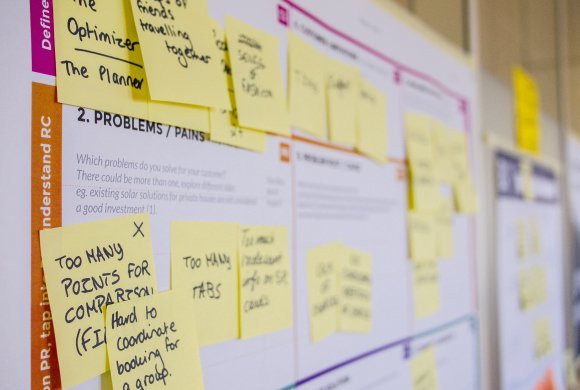2020 forced us to shift our perspective and rethink our workspaces and companies. For example, instead of the upward trend that we have seen in the past few years of going global and connecting on an international level, we recognized the need to support local businesses to keep them afloat, prioritized our personal health and safety, and were rushed into adapting from on-site to remote work.
With this in mind, what are the trends that emerged in 2020 that we see growing in the coming year?
Collective Displacement
Throughout the last year, millions of people worldwide have had to abruptly move their work from a commercial office, to the comfort of their own homes. We experienced this collective displacement suddenly, and to a degree that was unprecedented to modern society.
Work hasn’t been the only change in people’s lives. Friday night drinks are no longer at the bar, they are over Zoom. Workout classes are no longer downtown, they are streamed in the living room between the coffee table and the couch. People’s intimate spaces that used to be reserved for relaxing and unwinding have now taken on a different form, simultaneously used for working, shopping, exercising, home-schooling kids, and much more.
This collective displacement should a response from employers to evaluate their culture and make sure that they are engaging employees as much as they can. The physical space that drove a company’s culture is now replaced by a virtual space. A strong focus should remain on face-to-face experiences, albeit virtual for now.
Here are some examples to translate physical space culture to virtual space culture:
- Interest-based Channels: Create chat channels based on mutual interests such as photography, hiking, or fitness channels. These will help foster connections between employees – especially if you have new hires that haven’t had the chance to make organic connections yet.
- Happy Hour Socials: Survey your employees, learn what interests them, and springboard those interests into weekly after-hours events. They can be anything from a simple happy hour mingling session to a virtual yoga class or paint night.
- Wellness Breaks: Whether it’s taking a break at lunch for a 10-minute mindfulness session, lunch break stretches, or a 15-minute walk, staying active is imperative for maintaining overall health.
Creating Strong Virtual Teams
Collective displacement has left many employees rethinking their work routines and asking themselves if working from the office 5 days a week is necessary for their productivity and focus. Many people agree that a mix of office and remote working should become the new norm.
We know that working from home gives employees the freedom and flexibility to complete assigned tasks while juggling personal or familial responsibilities, but when it comes to facilitating creativity, collaboration, and motivation, the office sometimes comes out on top.
Additionally, with the uptake of remote work comes the possibility of workplace-culture shifts and isolation. Keeping your workplace-culture alive can be done in many creative ways such as employee engagement gamification software. Gamification increases connections between people and gives them a sense of purpose. When it comes to preventing isolation, checking-in with employees regularly will be important to remind them of their value in your team and that you care about them. This is especially important if you are working with younger generations as they tend to prioritize more purpose and meaning in their jobs.
As a business leader, you should be asking yourself – is your expensive or oversized office truly essential? What would be the perfect ratio between office and remote work for your employees to increase not only productivity, but workplace satisfaction while still maintaining the necessary and valuable personal connections?
A Conversation Around Empathy
Society has undoubtedly undergone some major shifts in 2020. While quarantining, people around the world went from spending their time baking banana bread, to educating themselves about modern-day racial injustice and inequality. This forged a much-needed push towards evaluating organizations’ roles in these issues. With this in mind, how companies decide to address social issues and how they deliver the narrative matters a great deal.
Companies must have difficult and honest conversations about equality and empathy, and how they are weaved throughout their culture. Empathy is not only about listening but is also a way of behaving. It’s important to keep in mind that words are meaningless without action. It’s not enough to make a statement without intent to act. Keep the conversation going by initiating discussions, offering training, and creating a safe place for employees to speak up about things that have made them uncomfortable.
This past year we have experienced a disruption in our way of life, and it’s up to us to reshape it into something better than before. Think about the effect of collective displacement, how to integrate remote work within your organization, and have conversations around empathy. Now, more than ever, it’s important to be mindful of your employees’ perspectives and differences, and create psychological safety and a healthy, productive, and meaningful work environment for them.




